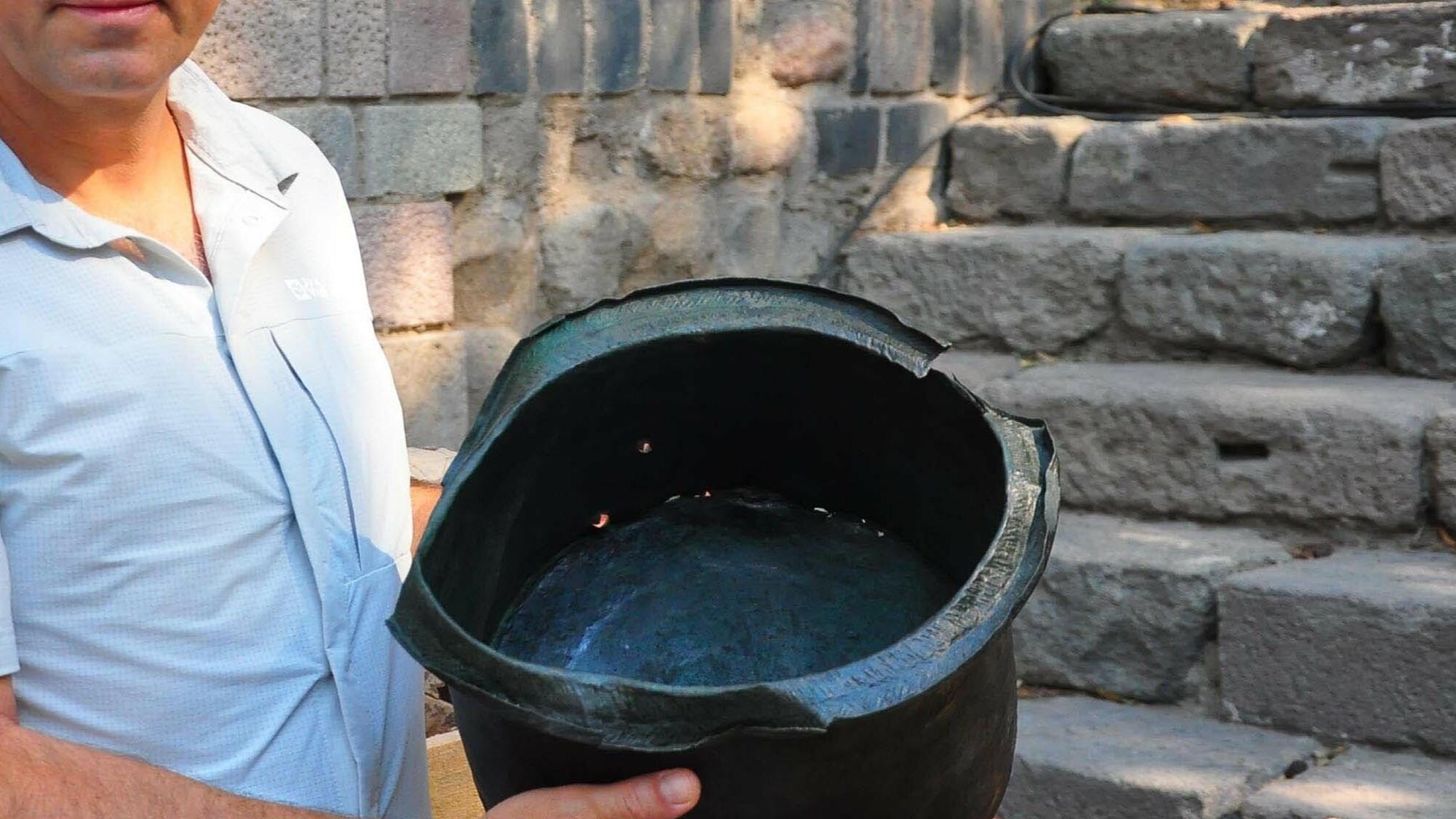
A 1,400-year-old bronze cauldron has been uncovered in the “Mosaic House” complex within the ancient city of Pergamon (modern-day Bergama), one of Anatolia’s most historically layered archaeological sites, stretching from prehistoric times to the Ottoman era.
The cauldron was found in a stone courtyard pool believed to have been used during the Roman period. The artifact was discovered in its original location and in an undisturbed state, giving information about daily life and craftsmanship in the region during late antiquity.
According to the excavation team, restoration and cleaning processes have been completed, and the artifact will go on public display at the Bergama Museum soon.
“This cauldron is an extraordinary example of Anatolia’s centuries-old bronze craftsmanship tradition. It dates back around 1,400 years, and its workmanship and technique are nearly identical to traditional methods still used today,” said Professor Yusuf Sezgin, Chair of the Archaeology Department at Manisa Celal Bayar University and head of the excavation team.
The excavation site, which is about 350 meters from the famous Red Basilica (Kızıl Avlu), includes a residential complex with multiple mosaic-covered rooms, hinting that it may have belonged to a high-ranking official or a significant religious figure from the Christian period.
“What makes this find exceptional is that it was discovered inside a pool likely used to collect rain or spring water, not a swimming pool. The building appears to have been abandoned around the seventh century, possibly during Arab incursions. It collapsed naturally and was never reoccupied. That’s why the cauldron was found in situ, intact,” he said.
He noted that bronze was an expensive and highly valued material in antiquity, typically reserved for special uses, unlike more commonly used ceramics.
The cauldron, believed to have been used for drawing or transporting water to a nearby kitchen area, was crafted using a hammering technique. Sezgin said it is still practiced in Turkish regions such as Diyarbakır and Şanlıurfa today.